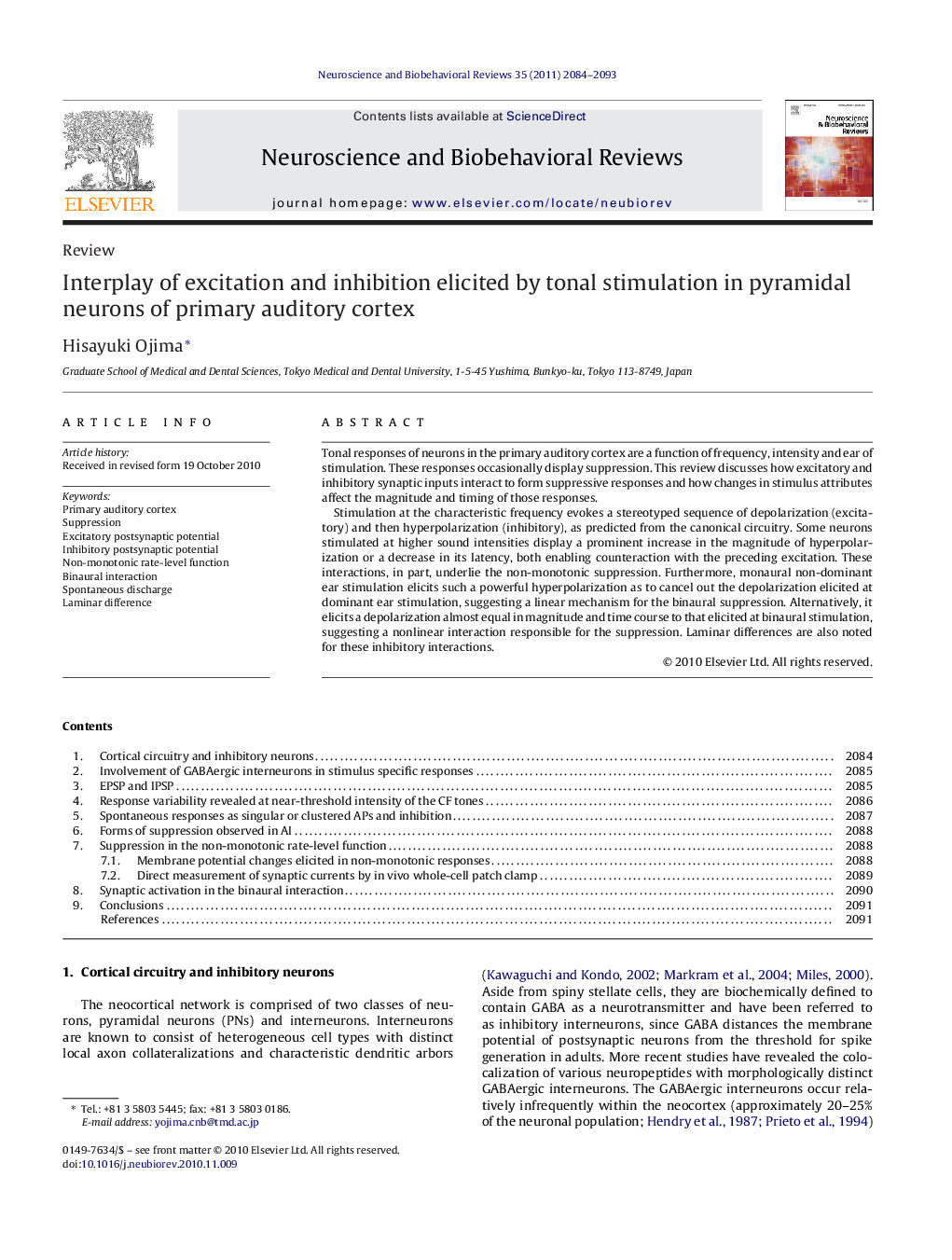| Article ID | Journal | Published Year | Pages | File Type |
|---|---|---|---|---|
| 10461528 | Neuroscience & Biobehavioral Reviews | 2011 | 10 Pages |
Abstract
Stimulation at the characteristic frequency evokes a stereotyped sequence of depolarization (excitatory) and then hyperpolarization (inhibitory), as predicted from the canonical circuitry. Some neurons stimulated at higher sound intensities display a prominent increase in the magnitude of hyperpolarization or a decrease in its latency, both enabling counteraction with the preceding excitation. These interactions, in part, underlie the non-monotonic suppression. Furthermore, monaural non-dominant ear stimulation elicits such a powerful hyperpolarization as to cancel out the depolarization elicited at dominant ear stimulation, suggesting a linear mechanism for the binaural suppression. Alternatively, it elicits a depolarization almost equal in magnitude and time course to that elicited at binaural stimulation, suggesting a nonlinear interaction responsible for the suppression. Laminar differences are also noted for these inhibitory interactions.
Keywords
Related Topics
Life Sciences
Neuroscience
Behavioral Neuroscience
Authors
Hisayuki Ojima,
